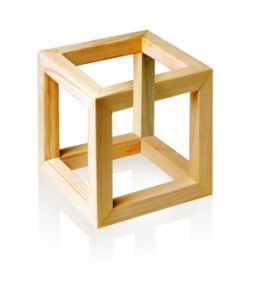We’re going to continue talking about how to implement the list to make sure we’re creating strong characters. Last time, we made sure that our characters had goals. Next up…
Are They Three-Dimensional?
There are plenty of ideas out there about how to make your characters seem real, but I’m going to get my geek on and talk about a specific way to do this. A couple of weeks ago, Kristen Lamb mentioned this technique on her blog as well, but I’m going to take her idea one step further.
In role-playing games, specifically Dungeons & Dragons, players need to decide on whether or not their character is a “good guy” or a “bad guy”. However, the breakdown is a bit more complicated than a simple white or black hat. In the Dungeons & Dragons’ world, this label is called alignment.
As Kristen explains in her post:
[A] character’s alignment is … a way to categorize a character’s moral and ethical perspectives in relation to the greater societal framework. The Advanced Dungeons & Dragons 2nd Edition Player’s Handbook. TSR, Inc. breaks down character alignments into the following:
Lawful Good Neutral Good Chaotic Good Lawful Neutral Neutral Chaotic Neutral Lawful Evil Neutral Evil Chaotic Evil
So that we don’t all have to head over to Kristen’s blog for the details of what those categories mean, I’ll give a brief rundown with paraphrased definitions taken from Wikipedia. Follow the link for the full explanation. Stick with me to the end and I’ll tell you how to use these labels.
Lawful Good: These characters act with honor and a sense of duty. They may sometimes find themselves faced with the dilemma of whether to obey law or good when the two conflict.
Neutral Good: These characters are guided by conscience without regard for or against laws. They have no problems with co-operating with lawful officials, but do not feel beholden to them.
Chaotic Good: These characters favor change for a greater good, disdain bureaucratic organizations that get in the way of social improvement, and place a high value on freedom.
Lawful Neutral: These characters believe strongly in honor, order, rules and tradition, but are primarily guided by their system of belief, not by a commitment to good or evil.
Neutral: This alignment represents Neutral on both axes and tends not to feel strongly towards any alignment.
Chaotic Neutral: These characters follow their own heart and generally shirk rules and traditions. The only reliable thing about them is how totally unreliable they are.
Lawful Evil: These characters see a well-ordered system as being easier to exploit, and while they usually obey their superiors and keep their word, they care nothing for the rights and freedoms of other individuals.
Neutral Evil: These characters are typically selfish and have no qualms about turning on their allies-of-the-moment. They abide by laws for only as long as it is convenient for them.
Chaotic Evil: These characters have no respect for rules, other peoples’ lives, or anything but their own desires, which are typically selfish and cruel. They enjoy the suffering of others and view honor and self-discipline as weaknesses.
Got all that? Good. Okay, so what do we do with that information? First, as Kristen mentions, we figure out which alignment applies to each of our characters. Easy, right?
Well, here’s where the trick comes in. People—real, three-dimensional people—often have a different self-concept than what others think of them. So we need to label our characters twice, once with their self-reported alignment and once with their objective alignment.
This technique adds depth to your characters. Imagine what happens if your Neutral Evil villain thinks he’s really Neutral Good, or even Chaotic Good. Here you have this guy who, in reality, is very selfish and couldn’t care less about anyone else, but in his delusional mind, he thinks he’s ignoring the law for the greater good. Or similarly, what if your main character is Chaotic Good, but because of her shady past, she thinks she’s Chaotic Evil.
This type of disconnect between their self-image and their actions creates a deeper meaning behind everything they do. A character won’t be following the law just because they’re Lawful Neutral. They’ll be following the law because something compels them to be better than they think they are, edging them closer to Lawful Good. And that all impacts how the other characters will treat them and interact with them. Kind of like real people.
Could you implement this technique? Or does this make sense only if you’ve been a gamer? Have you ever created a character along these lines before?

